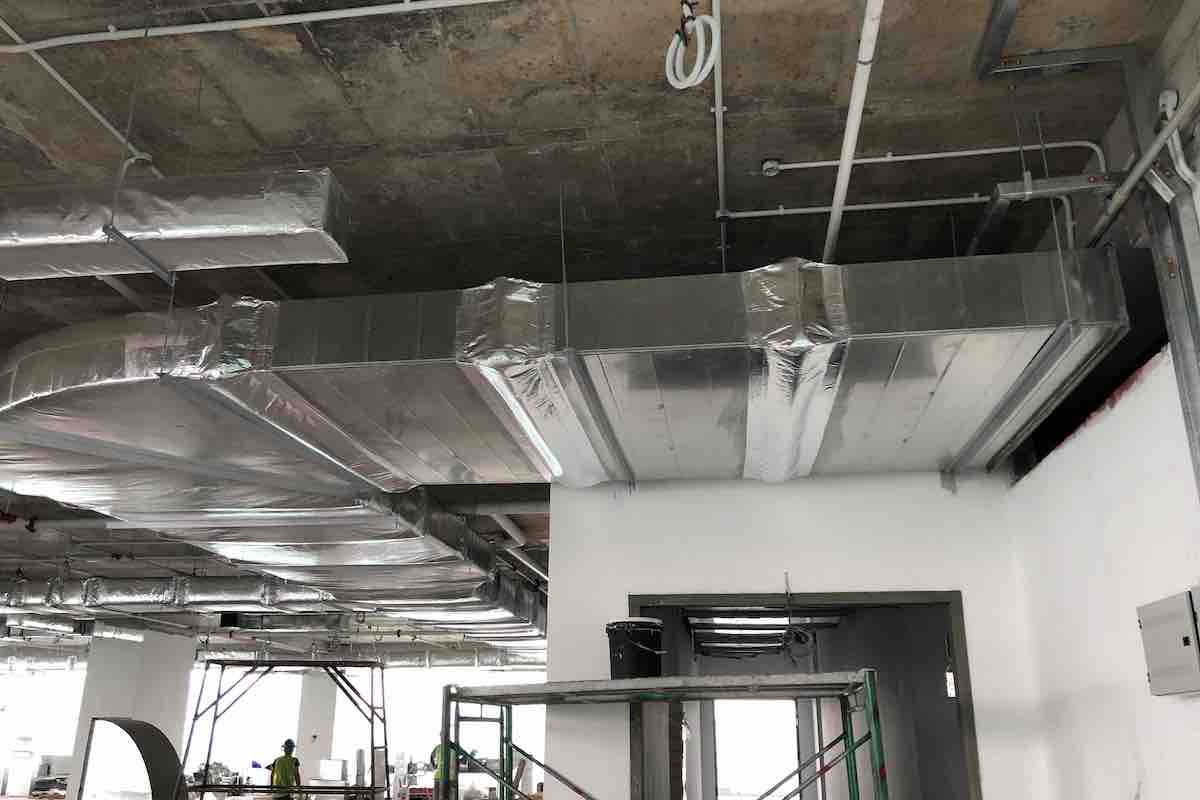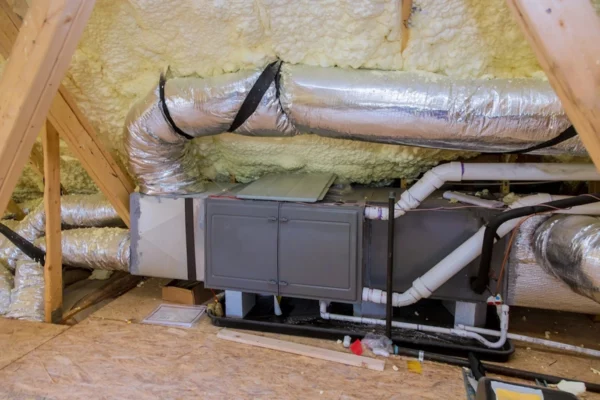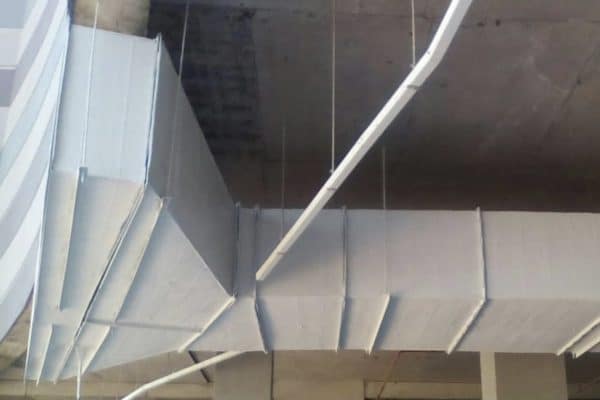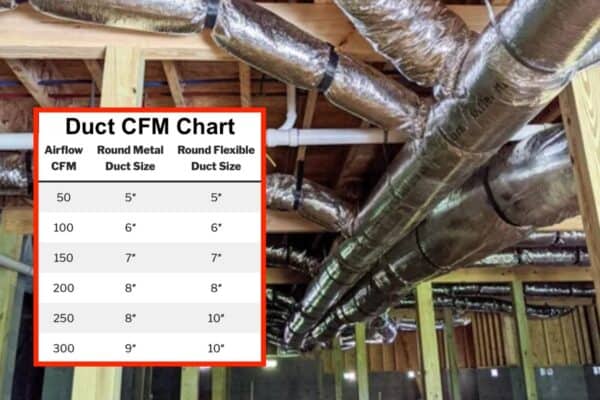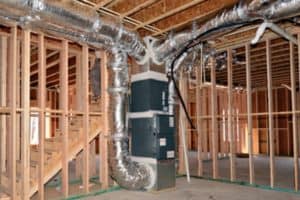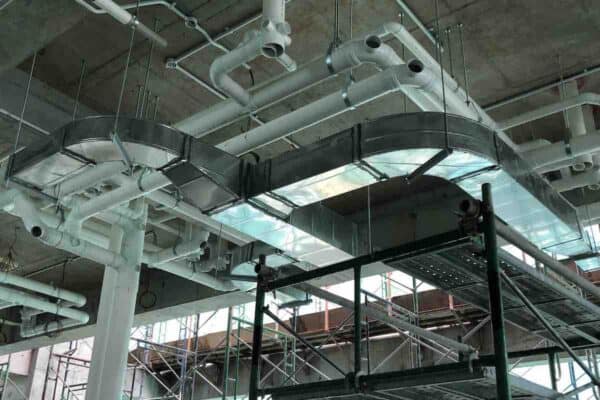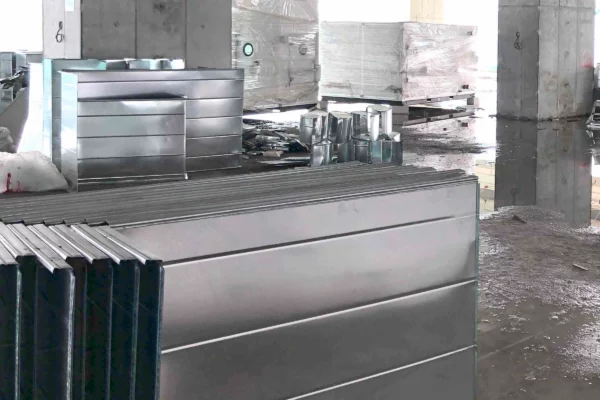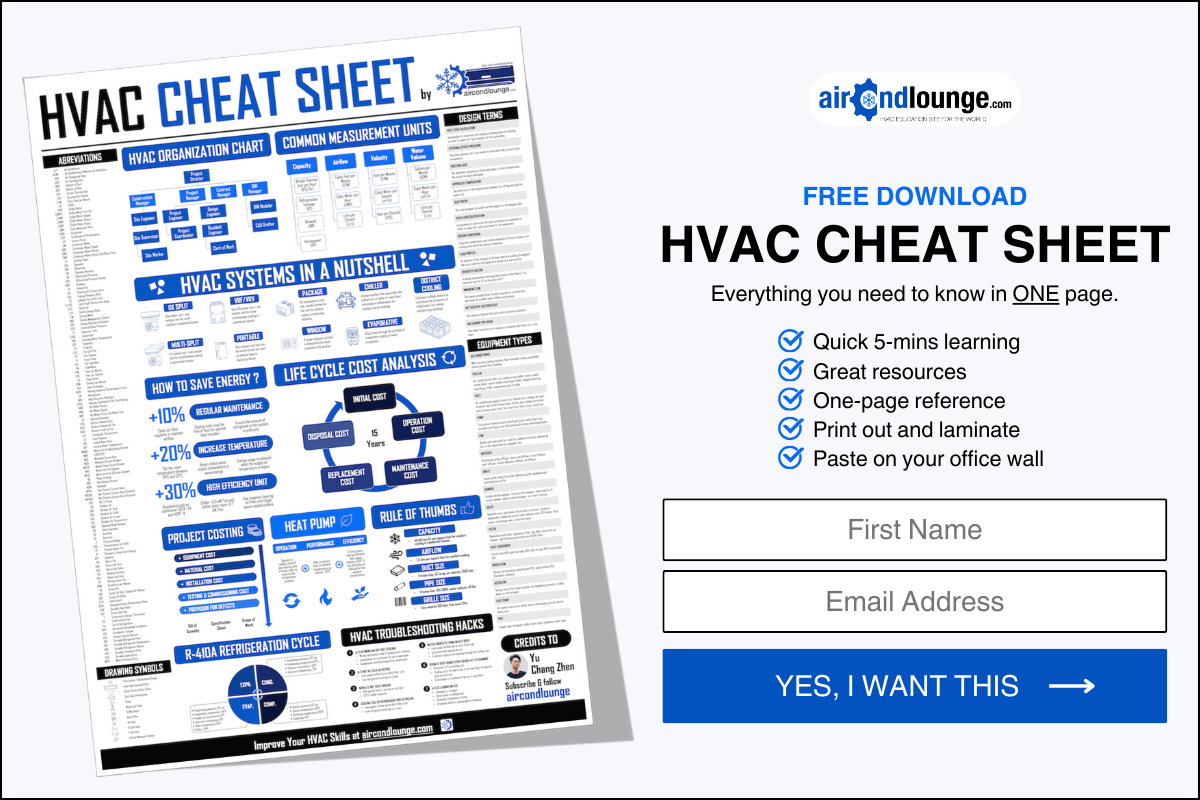4 Types of Duct Insulations (with Specifications)
There are only a few types of insulations used for HVAC ducts. However, people often can’t get to see duct insulations since ducts are installed above the ceiling. So, I’ll share the 4 common types of duct insulations and their specifications.
The 4 common types of duct insulations are as follow:
- Fiberglass Insulation with Aluminium Foil
- Cross-Linked Polyethylene Insulation Foam
- Rockwool Insulation with Perforated Metal Sheet
- Fiberglass Insulation with Perforated Aluminium Foil
Normally, insulations are put on the external surface of ducts to prevent condensation and energy loss. However, insulations are sometimes pasted on the internal surface of ducts to suppress noise especially for the ducts of air handling units (AHUs).
The specification of insulations is different for external and internal duct applications. Some insulations are not suitable for internal duct applications. With that said, let’s get started.
1. Fiberglass Insulation with Aluminium Foil
Fiberglass is the most common insulation material for HVAC ducts. Flexible ducts are always insulated by fiberglass material. Fiberglass insulations have a layer of shiny aluminium foil on the outer surface to hold the fiberglass material together.
Below is an actual site photo of an AHU main supply air duct that I took during the construction. Notice that the first three sections of the duct have no external insulations. It is because they were internally insulated to suppress the noise coming out from the AHU.
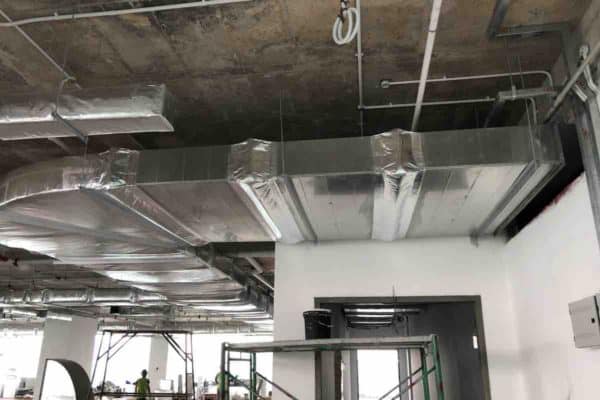
After the internal insulation, you can see that the rest of the duct is externally insulated by fiberglass with aluminium foil. Even when the duct is internally insulated, duct joints are still required to be externally insulated to prevent condensation.
Usually, air conditioning ducts are required to have at least 1″ (25mm) thick fiberglass insulations for the supply and return air ducts with the density of the fiberglass should not be less than 2 lb/ft3 (32 kg/m3) and the thermal conductivity of the fiberglass should not be more than 0.24 btu.in/hr/sqft/°F (0.035 W/mK).
However, the thickness of the insulation is dependent on the temperature difference between the air moving inside the duct and the air surrounding the outside of the duct. Below is a general guideline of the insulation thickness for various temperature differences:
| Temperature Difference | Recommended Thickness |
|---|---|
| 30°F (16.7°C) | 1″ (25mm) |
| 35°F (19.5°C) | 1″ (25mm) |
| 40°F (22.2°C) | 1-1/2″(38mm) |
| 45°F (25.0°C) | 1-1/2″ (38mm) |
| 50°F (27.8°C) | 2″ (50mm) |
Often, the AHU supply air temperature is around 57°F (14°C) and the room temperature is around 75°F (24°C). So, the temperature difference may be around 20°F (10°C). Hence, using 1″ (25mm) thick fiberglass insulation is sufficient given that you maintain the density of the fiberglass at 2 lb/ft3 (32 kg/m3).
Relevant post: Duct Insulation Guide: How-to, Selection & Thickness.
2. Cross-Linked Polyethylene Insulation Foam
Polyethylene (PE) is often used to insulate air conditioning ducts as well as exhaust ventilation ducts. PE insulations are more preferred to be used when the duct is exposed. PE insulations are more expensive than fiberglass insulations and thus, concealed ducts are usually not insulated with PE foam.
Below is a photo I took years ago. It is a fresh air duct insulated using 1/8″ (3mm) thick PE insulations. If the duct was connected to an air conditioner, the insulation thickness is usually 3/8″ (9mm) because the temperature difference is greater.
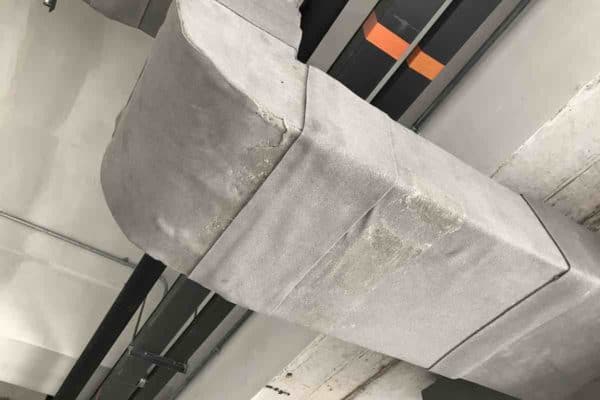
PE insulated ducts are more appealing because they don’t have wrinkles like fiberglass insulated ducts do. Also, PE insulations are safer to work with compared to fiberglass insulations.
Sometimes, hospital projects may call for at least 3/4″ (20mm) thick PE insulations with the density of the PE foam should not be less than 2 lb/ft3 (30 kg/m3) and the thermal conductivity of the fiberglass should not be more than 0.24 btu.in/hr/sqft/°F (0.035 W/mK).
Nevertheless, PE insulations thickness of 3/8″ (9mm) and 1/2″ (12mm) are more common for residential and commercial buildings based on my experience. Hospitals required low supply air temperature and thus, they usually have greater specifications than other buildings.
In the meantime, I would like to inform you that you can learn quicker by getting my HVAC Begin (eBook) if you’re a beginner. But, if you have a year or two of experience, then I would suggest you consider my HVAC Basics (eBook). Nonetheless, I encourage you enroll in my HVAC Beginner Course: 10 Days to Become Competent in HVAC if you want to equipped yourself with a complete set of basic HVAC skills.
HVAC Beginner Course
Learn the most basics and foundational HVAC skills including cooling capacity calculation, equipment selection, duct sizing, pipe sizing, exhaust fan sizing, controls, electrical and more.
3. Rockwool Insulation with Perforated Metal Sheet
Rockwool or stone wool is a common sound-insulating material installed on the internal surface of large air conditioning ducts to absorb noise. Averagely, internal insulations stretch about 20 ft (6 m) and 4 ft (1.2 m) from the supply air outlet of AHUs and FCUs respectively.
Below you can see is the inside of an AHU duct. It is insulated with rockwools and the rockwools are secured by perforated metal sheets.
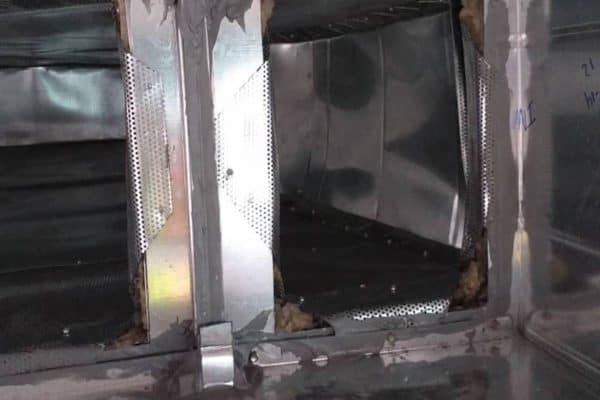
Sometimes, fiberglass with the same specification can be used to replace rockwool. However, rockwool is more preferred because they don’t tear easily with the high wind speed inside AHU ducts.
Typically, the internal insulation of air conditioning ducts is required to be at least 2″ (50mm) thick with rockwool insulations. The density of the rockwool should not be less than 2 lb/ft3 (32 kg/m3) and the thermal conductivity of the rockwool should not be more than 0.24 btu.in/hr/sqft/°F (0.035 W/mK).
If the air velocity exceeds 1500 fpm (7.6 m/s), perforated metal plates should be used instead of perforated metal sheets to increase the integrity. The thickness of the perforated metal plate is around 24G (0.6mm).
4. Fiberglass Insulation with Perforated Aluminium Foil
Fiberglass is also used for the internal insulation of air conditioning ducts to suppress noise. Usually, fiberglass with perforated aluminium foil is used to internally insulate FCU ducts. AHU ducts have high wind speed which can tear the fiberglass and aluminium foil.
Below is a photo of a fiberglass perforated aluminium foil internally insulated FCU duct. I took the photo of the inside of the duct before workers move them to position and install.
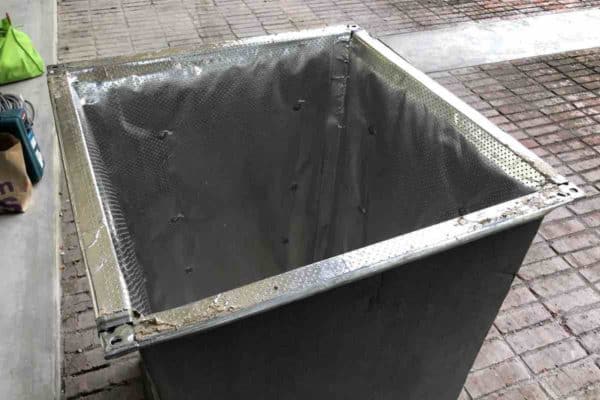
FCUs are not as noisy as AHUs. Thus, the internal insulation of FCU ducts are mostly 1″ (25mm) thick with fiberglass. The density of the fiberglass remains not less than 2 lb/ft3 (32 kg/m3) and the thermal conductivity of the fiberglass should not be more than 0.24 btu.in/hr/sqft/°F (0.035 W/mK).
For sound insulation applications, perforated foils must be used rather than solid foils because we need those holes for the material to absorb sound effectively. However, it is very important not to use too big of a hole to prevent the fiberglass broke off and causing health hazards.
Conclusion
Apart from the above 4 types of duct insulations, there are other types of duct insulations such as polyurethane, closed-cell (superlon) and pre-fabricated ducts. However, these 4 types of duct insulations are ones that you are most likely to encounter when handling air conditioning ducts.
Lastly, consider my HVAC Begin (eBook) if you’re a beginner and you want to have a foundational knowledge in HVAC. But, if you have a year or two of experience, then I would suggest you consider my HVAC Basics (eBook). Nonetheless, I encourage you enroll in my HVAC Beginner Course: 10 Days to Become Competent in HVAC if you want to equipped yourself with a complete set of basic HVAC skills.
HVAC Beginner Course
Learn the most basics and foundational HVAC skills including cooling capacity calculation, equipment selection, duct sizing, pipe sizing, exhaust fan sizing, controls, electrical and more.
If you have anything to add (or ask) about this topic, leave a comment down below!


